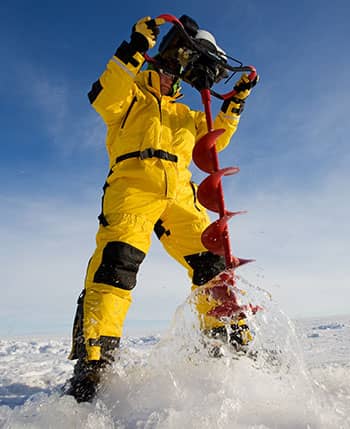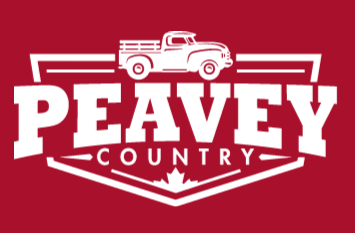How to Prepare for Ice Fishing
Written by Helen McMenamin
From Fall 2018 issue of Connected to the Land
“Ice fishing is big and growing fast,” says Matt Brown of Eskimo Ice Fishing Equipment. He sees the ease and speed of setting up a comfortable shelter and drilling fishing holes as a big part of the attraction.
“Not everybody sees sitting in a snowsuit on an upturned pail on a frozen lake waiting for a fish to take your bait as a great winter activity, but with today’s pop-up shelters it’s quite a different experience. And you can bring the kids and the dog. It’s a big family thing.
“It takes under a minute to set up a hub shelter,” he says. “You just lay it out, pull on the tabs to set up the walls and then step inside to push up the roof. Everything just pops up. Bring in your propane heater, drill your holes and you can be snug and warm, fishing in 10 minutes.”
Some shelters have skirts you can load up with snow to seal out drafts and ice anchors to keep the shelter in place. Many are insulated, with pockets to keep hats and mitts out of the way and fishing essentials where they’re handy. Vents keep the air fresh and windows let you keep an eye on your tip-ups. (On most lakes, each fisher can have two lines, but no more than 60 meters apart and keep them in sight at all times.)
Brown also recommends a power auger that allows you to drill your fishing holes in the time it takes to make the shelter warm.
“A hand auger is fine early in the winter, when the ice isn’t too thick.,” he says. “But last winter on Lake Winnipeg, we had just about five feet (1.5 meters) of ice. It would take a while to drill through that with hand auger.”
Finding your perfect fishing spot is easier in winter. In summer, you’re limited to fishing from the shore and some of the best spots are hard to reach unless you have a boat. In winter you can take a snowmobile or cross-country ski, even walk on the ice with your gear on a toboggan to a place where you think the big fish might be. Or you can reach some beautiful remote spot.
The access to whole lakes the ice gives families is one of the great things about ice fishing, according to Brown.
“Often, the best fishing spots are only accessible from a boat,” he says. “A new boat can easily cost $20,000 and you need a vehicle that can pull it to the lake. Otherwise you’re stuck on the shore. Ice fishing is much more affordable. You can get a pop-up shelter with room for a family and an electric ice auger for under $600. . Fishing rods and reels can cost as much as you want to pay, but you can get an adequate small rod for inside a shelter, with a reel, for as little as $20.
Once set up in your hut or shelter with the family or buddies jigging and tip-ups (flagged float that shows you when a fish takes your hook) set, you have time for socializing or family activities – without screens and often out of cell phone range.
“I just love that digital detox time,” says Brown. “I go almost every other weekend. Winter goes so fast when you have an activity that’s so different from your everyday routine.”
Gail Bailey’s family owns Tobin Lake Resort, near Nipawin in north-east Saskatchewan. It’s renowned for its summer fishing, and fall black bear hunting. It’s also on a snowmobile trail that links several small towns. In winter though, Lake Tobin is the spot for really big fish.
Bailey really enjoys a day fishing on the ice. “It’s family time,” she says. “We play cards and visit. And, every now and then you dash out the 50 yards to your fishing hole and haul in your line.” She says the fish from under the ice are better eating too, especially the northern pike. She finds the perch and walleye are also firmer and whiter than summer-caught fish.
Tobin Lake Resort has a campsite as well as winterized suites and cabins and fishing shacks for rent and a restaurant. More and more visitors are coming to the resort in winter. They’re coming from Europe as well as all over North America. Germans especially love ice fishing and other winter activities.
“Lots of them come every year,” says Bailey. “As they leave, they ask me to book them in for next year. “
On Lake Winnipeg, Brown’s main fishing spot, pickerel and greenbacks are the main fish. The fish and the lake’s easy access is making it the North American mecca for ice fishing. Many visitors are after a pickerel over 30 inches longer that qualifies them for the title of master angler. Other people head for Lake of the Woods in Northern Ontario for the trout.










